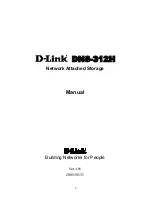
Chapter 17: RADIUS and Clients
188
Overview
The switch has RADIUS and clients for remote authentication.
Here are the features that use remote authentication:
802.1x port-based network access control. This feature lets you
increase network security by requiring that network users log on with a
username and password before the switch forwards their packets. This
feature is described in Chapter 18, “802.1x Port-based Network
Access” on page 201.
Remote manager accounts. This feature lets you add manager
accounts to the switch by transferring the authenticating task from the
switch to an authentication server on your network. Accounts that the
switch authenticates are called local accounts. This feature is
described in “Managing Local User Accounts” on page 52.
The RADIUS client supports both features, but the client
supports only the remote manager accounts feature. Here are the
guidelines:
Only one client can be active on the switch at a time.
If you want to use only the remote manager account feature, you can
use either RADIUS or because both clients support that
feature.
If you want to use 802.1x port-based network access control, you have
to use the RADIUS client because the client does not
support that feature.
Remote Manager
Accounts
The switch comes with one local manager account. The account is
referred to as a local account because the switch authenticates the
username and password when a manager uses the account to log on. If
the username and password are valid, the switch allows the individual to
access its management software. Otherwise, it cancels the login to
prevent unauthorized access.
There are two ways to add more manager accounts. The first way is to
create additional local accounts. For more information about local
accounts, see “Managing Local User Accounts” on page 52.
The second way to add more accounts is with a RADIUS or
authentication server on your network. With either authentication method,
the authentication of the usernames and passwords of the manager
accounts is performed by one or more authentication servers. The switch
forwards the information to the servers when managers log on.
Содержание AT-8100L/8POE
Страница 4: ......
Страница 10: ...Contents 10...
Страница 14: ...Figures 14...
Страница 22: ...Chapter 1 AT 8100 Series Version 2 2 5 0 Web Browser Interface 22...
Страница 84: ...Chapter 5 Setting Port Statistics 84...
Страница 90: ...Chapter 6 Port Mirroring 90 6 Click Apply 7 Click SAVE to save your changes to the startup configuration file...
Страница 92: ...Chapter 6 Port Mirroring 92...
Страница 100: ...Chapter 7 Spanning Tree Protocol on a Port 100...
Страница 120: ...Chapter 9 Link Aggregation Control Protocol LACP 120...
Страница 130: ...Chapter 10 Setting Static Port Trunks 130...
Страница 148: ...Chapter 12 Spanning Tree Protocols on the Switch 148...
Страница 158: ...Chapter 13 Internet Group Management Protocol IGMP Snooping 158...
Страница 168: ...Chapter 14 IGMP Snooping Querier 168...
Страница 178: ...Chapter 15 Power Over Ethernet PoE 178...
Страница 230: ...Chapter 19 Setting IPv4 and IPv6 Addresses 230...
Страница 242: ...Chapter 20 Access Control Lists ACL 242...
Страница 246: ...Chapter 21 Setting Static Routes 246 8 Click Apply 9 Click SAVE...
Страница 250: ...Chapter 21 Setting Static Routes 250...
Страница 319: ...AT 8100 Series Version 2 2 5 0 Web Interface User s Guide 319 Model Name Asset ID...
Страница 320: ...Chapter 25 LLDP and LLDP MED 320...
















































